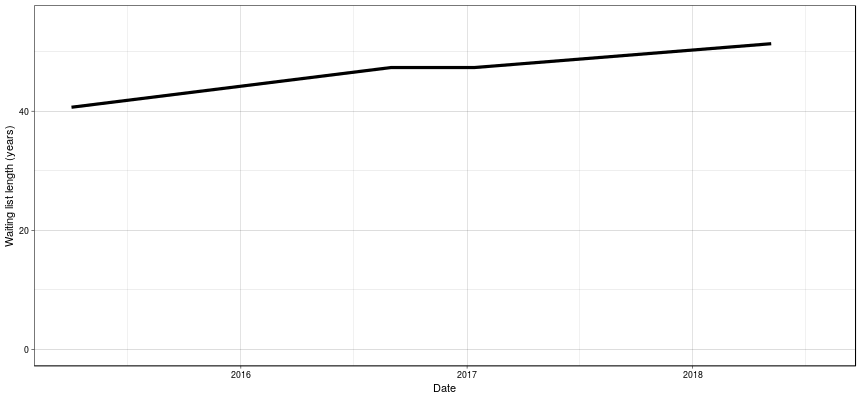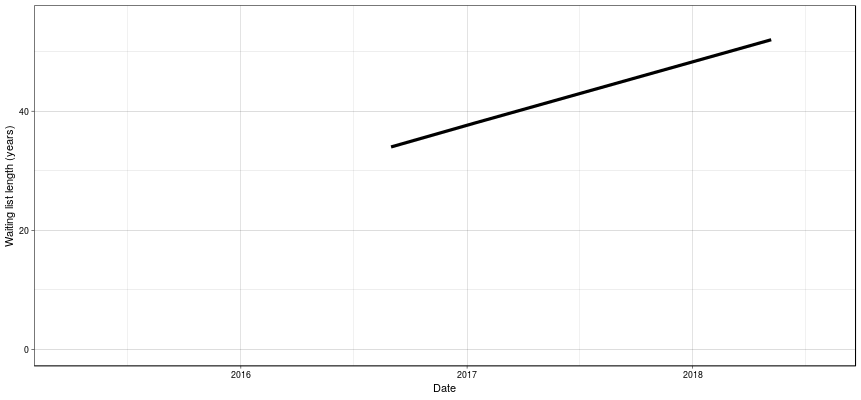Great News!
The New Zealand GRS waiting list nightmare may be over.
Some months ago now I made a shiny app tracking the results of OIA requests into the New Zealand GRS waiting list. I wrote a post (or part of one), pushed the repository, and then sat on it. The reason? It was too depressing.
But, amazingly, the situation has changed: the government has quietly changed the funding rules to get rid of the funding caps that were causing the problem. In fact they’ve now made the former caps minimums, which might go some way to preventing a recurrence of the situation we had a few years ago where no surgeries were taking place at all. They also want to get local surgeries set up and… look, just read the article.
You can view the app here, and read the code here. Below is that blog post I half wrote, and then gave up in despair, which was to be published back in July under the headline “GRS in nz — a multi-decade disgrace”:
It is not at all difficult to find news articles and press releases about elective surgery waiting times in New Zealand—fresh ones appear on a regular basis. An “elective” surgery is any surgery that is not part of an immediate medical emergency, but don’t be fooled into thinking that this makes them unnecessary. Hip and knee replacements for the elderly are common sources for headlines in recent decades: they’re important, they’re common, and any hiccups in the process leads to disproportionate political pressure.
“Big differences in waiting times for elective surgery”; “280,000 NZers waiting for surgery, wait times up - HFANZ”; “Health system struggling with hip, knee ops”; “Thousands left off surgery waiting lists suffering indefinitely - study”…
It’s important to look at the kinds of waiting list lengths we’re talking about here. In the second link via the Health Funds Association, from 2016, gives a number of 304 days for the average amount of time people had been waiting for surgery. Meanwhile the final link reports that people are being deliberately withheld from DHB waiting lists to keep them below a cap beyond which the DHB would be penalised—a cap of four months.
These are tragic, but I bring them up only as comparison for the Gender Reassignment Surgery (GRS) waiting times. GRS has been funded by the Ministry of Health since a 2003 review at a rate of 3 vaginoplasties per two years, along with one phalloplasty over the same period. This was based on old, inaccurately small estimates of the trans population and, notably, the belief that the trans masculine population was only about a third of the size of the trans feminine (also oh-so-very false).
We don’t appear to have any waiting list data older than a few years for either surgeries, but what we have paints a picture of an ever-lengthening list without any sign of letup. Our most recent information (May 2018) calculates the vaginoplasty list at 51-and-a-third years long; meanwhile the phalloplasty list has now reached 52 years. This is obscene: you could spend your entire adult life on this list.
- Vaginoplasty:

- Phalloplasty:

The fact that both lists have just now met at the same, absurdly high
“…is a tragic coincidence,”” is where I was probably going with that, it’s hard to remember.
Editor’s Note May 2023: My shiny apps are largely out of commission these days, alas!